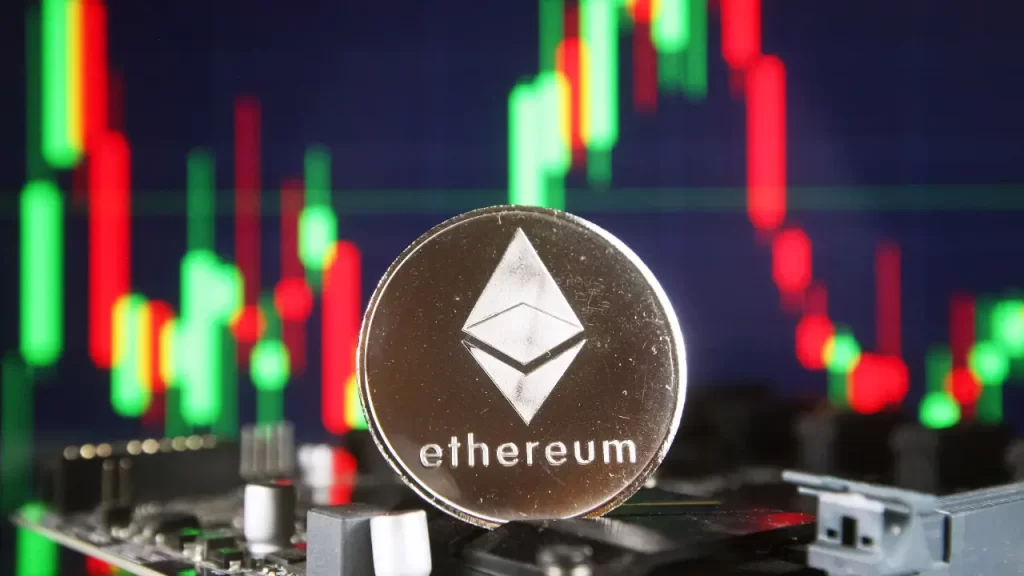Ethereum is probably the most successful cryptocurrency, and the platform for any type of decentralised applications. It has an open blockchain, it’s censorship-resistant, decentralised and secure – developers have a platform where they can build decentralised applications on top of it.
Ethereum 2.0 is said to be more scalable than the current iteration with a host of innovations for developers, including a shift in verifications from proof-of-work to proof-of-stake, and the addition of Sharding.
More Transactions Per Second
Ethereum 2.0 brings gravitation, a new way of securing blockchains as groups of computers that provide the computing power, where each group introduces a new block (record) to a chain. This chain of blocks contains all transactions made and is replicated by all computing groups, making the chain not only scalable but faster in operation by increasing transactions per second. The upgrade to Ethereum is part of its roadmap and is happening in phases. The Beacon Chain, the starter for the network, was released in December 2020 with its merger into mainnet expected to happen in 2022.
Instead of staking, Stake Chain uses proof-of-stake – or PoS – to verify transactions and create blocks. In Ether, this replaces some kind of proof-of-work mechanism (think mining computers) that have traditionally been used to secure ledgers within blocks. Any ether tokens stored in a staking pool have a greater chance of being verified, which helps to lower energy usage – a core requirement for sustainability.
Scalability upgrades also feature eWASM, which enhances the Ethereum Virtual Machine to let smart contracts be written in multiple languages and extend the scope of development. This would hopefully lead to a more open-ended, decentralised ecosystem.
More Secure
On the other hand, while Ethereum functions just fine on its current proof-of-work consensus mechanism, the transitory behalf functionality leaves the network vulnerable to different forms of assault, and this is something that will be remedied on Ethereum 2.0 through the introduction of proof of stake, an alternative consensus algorithm to mining that does away with the need for miners entirely and instead relies on users who stake the network’s native cryptocurrency to validate transactions and thus help to provide more robust security for the Ethereum network.
This will keep energy costs low and make the network more resilient to attack, while the slashing mechanism in proof-of-stake deters dishonest behaviour by validators as they risk getting part of their staked ETH ‘slashed’ if they verify bad transactions or produce malicious blocks.
This upgrade will also help grow the growing world of Decentralised Finance (DFi) and NFT markets by increasing transaction speeds and reducing gas fees. This upgrade will also enable the safe and transparent voting system (powered by sharding), which breaks up the networks into smaller pieces, which are processed at the same time.
More Interoperable
Ethereum 2.0 is moving towards much greater interoperability, in part by enlisting more entities to carry out transaction validation with Proof-of-Stake, which distinguishes consensus algorithms from energy-intensive computer processing.
This update will include Sharding, by splitting a blockchain to distribute load evenly and reduce congestion and transaction fees, while also allowing it to handle more users without compromising security.
For most Ethereum users, there may be very little change, but developers can immediately get to work on the new Ethereum version and rollups again help reduce load by offloading some transactions from main chain Layer 2 – the new version will be much easier to develop on for developers: much cheaper and faster for all Demand will increase for tokens as upgrades make Ethereum all the more robust for DeFi lending and asset trading – NFT market growth: demand will increase as tokenisation will handle utility tokens – supply chain management: Ethereum ecosystem can increase security of data and streamline logistics – NFT market growth: demand will increase; health records and digital voting systems too.
More Adopted
Greener crypto could attract investors who had otherwise been put off by energy use, such as family offices and endowments keen to see their money grow without causing a significant carbon impact. This latter shift will likely be decisive for convincing mainstream market investment in Ethereum.
Sharding is a process of splitting one blockchain into numerous consensus groups called shards. Every shard is able to process transactions in parallel, relieving the load of one blockchain at the same time drastically reducing the transaction time and gas fees by a factor of 33. As a result of sharding, dApps, DeFi and NFTs will become much cheaper, while the transaction time will shrink dramatically.
Staking will make it accessible to more people, too, fostering communities of third-party validators, who verify the blockchain transactions that allow consumers to use e-commerce systems, and maintaining the network. Staking incentivises people not to sell ETH, but to hold on to it for the long term, increasing the value of ETH, opening it up to institutional investors who might have otherwise been afraid to hold on to a volatile asset. Its reduction in energy requirements might be appealing to regulators; their blessing is yet another big hurdle for cryptocurrency.


